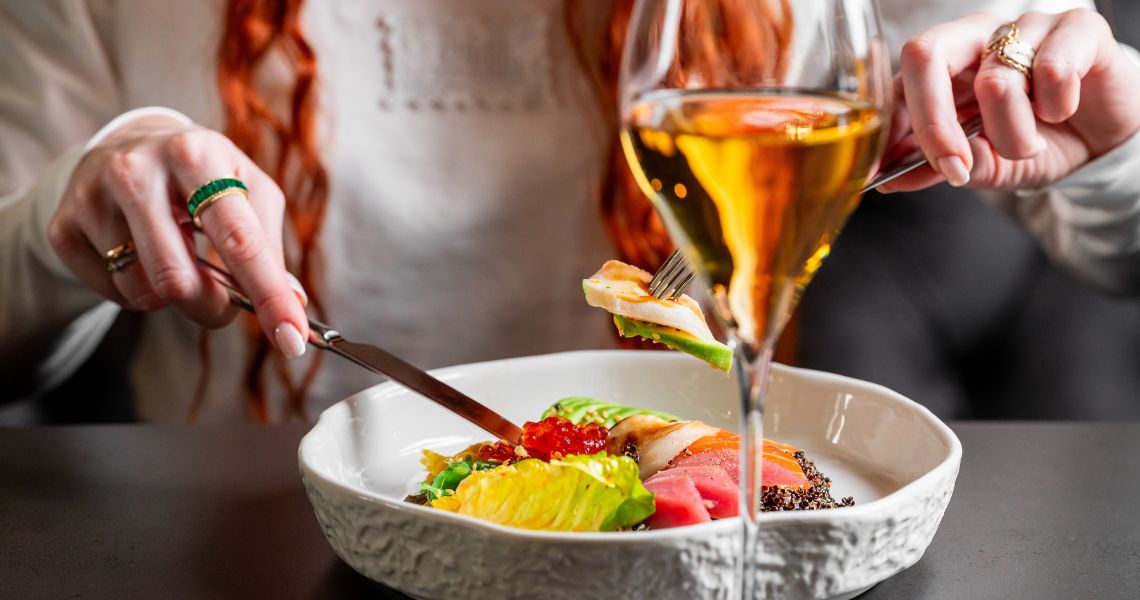The art of pairing: how to combine wines and and food successfully
Discover how to combine wine and food with this essential guide to food pairing: practical tips and ideas to enhance every flavour at the table.

What is wine pairing: basic principles
Wine pairing involves combining a wine with a dish in a balanced and compatible way, aiming for harmony so that both complement each other, enhancing their flavours, aromas, and textures. A successful pairing significantly enriches the gastronomic experience.
Basic principles of wine pairing
- Harmony of intensities: While light dishes are best paired with light wines, hearty dishes require fuller-bodied wines.
- Balance between flavours: It is essential that neither the food nor wine overpower the flavour of the other.
- Aromatic affinity: Wine pairing begins with the sense of smell; therefore, it can be interesting to match by similarity of aromas. For example, mild cheeses are ideal with aromatic white wines.
- Pay attention to the acidity: A wine with good acidity balances rich dishes and prevents a heavy feeling, as this type of wine refreshes the palate.
Red wines
Red meat and lamb
Entrecote, ribeye, or beef sirloin: full-bodied reds with firm tannins: cabernet sauvignon, syrah, malbec reserva or nebbiolo.
Roast lamb: powerful yet smooth reds like tempranillo reserva, syrah or cabernet sauvignon.
Pork meats
Roast, ribs, Iberian cured ham: Medium-bodied reds like tempranillo crianza, merlot or sangiovese.
Mild cured meats: young, fruity red wines like grenache or pinot noir.
Stews and casseroles
Beef stew with vegetables or pork stew with potatoes: structured and complex red wines like rioja reserva, malbec, cabernet sauvignon or nebbiolo.
Stews with legumes and slow-cooked meats: tempranillo crianza, merlot or syrah.
Rose wines
Cheeses
Fresh cheeses (mozzarella, ricotta, goat cheese): dry and light rosé.
Semi-cured cheese: rosé with a fruity touch.
Light red meats or grilled meats
Grilled beef or gourmet burgers: Medium-bodied rosé.
Roast pork or ribs: Fruity rosé that contrasts with the fat.

White wines
Fish and seafood
Grilled or baked white fish: sauvignon blanc or pinot grigio.
Shellfish and crustaceans: Albariño or fresh verdejo.
Sushi and ceviche: dry riesling or aromatic sauvignon blanc.
Salads and vegetables
Fresh salads or salads with fruit: Pinot grigio or dry rosé.
Grilled vegetables: Light chardonnay or sauvignon blanc.
Mild vegetable soups: Viognier or crisp chardonnay.
Practical tips to get your food and wine pairing right every time
To achieve a memorable dining experience with a food pairing, it’s essential to plan the ingredients we want to combine. These tips can be very useful:
- Match intensities: pair light dishes with delicate wines and hearty dishes with full-bodied wines. For example, light salads with young whites and beef tenderloin with structured reds.
- Use acidity to your advantage: pair fatty, fried, or creamy dishes with fresh, acidic wines, as they are ideal for cleansing the palate.
- Choose by contrast or affinity:
- By affinity: smoked fish with wines that have mineral notes.
- By contrast: blue cheese with sweet wine.
- When in doubt, choose a versatile wine: a dry, crisp white or a young red often goes well with many types of dishes.
Common mistakes in wine pairing
The perfect pairing is the combination that delights your palate; however, there are some aspects to consider when experimenting with a successful wine pairing. Therefore, avoid the following mistakes:
- • Disregard the temperature of the wine.
Serving wine at the correct temperature is essential for an optimal experience: young reds between 14 °C and 16 °C; full-bodied reds between 16 °C and 18 °C; whites between 8 °C and 12 °C, and sparkling wines between 6 °C and 8 °C.
• Ignore the sauce or garnish.
Did you know that a sauce often has more flavour than the main protein? For this reason, it is essential to consider this when pairing.
• Pair with very intense or cured cheeses. Cheeses such as Roquefort, cabrales or old manchego can overwhelm the nuances of a light or young wine, causing it to lose prominence and its aromas to be less perceptible. Matches intensities: mild cheeses with light wines, intense cheeses with robust or sweet wines.
What do you think about?
Share comments, opinions and tricks with the Community







